
Caltrain is implementing a Storm Water Management Program to protect storm water. Storm water is rain water that falls on our roads, parking lots, and neighborhoods and flows to rivers, creeks, and the ocean. Storm water is usually NOT treated, so it carries pollutants like trash and oil from our cities to our rivers, creeks, and eventually the ocean. Tell us what you’ve learned about storm water.
Why Storm Water Matters
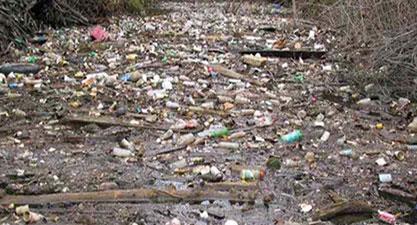
Trash buildup immediately downstream of the Julian Street bridge, Cayote Creek, San Jose, CA, January 27, 2004. Photo by Friends of Cayote Creek as published by the San Francisco Bay Regional Water Quality Control Board in "A Rapid Trash Assessment Method Applied to Waters of the San Francisco Bay Region: Trash Measurement in Streams" dated April 2007.
Storm water is a crucial resource because it flows to and fills our rivers, creeks, ponds, lakes, and San Francisco Bay. Surface water provides recreation uses for our families and our communities. Surface water also provides habitat for a variety of wildlife, including endangered fish, bird, and amphibian species. These surface waters receive storm water from our developed areas. Unlike the sanitary sewer system, storm water doesn’t go through a treatment plant so pollutants may not be removed before reaching San Francisco Bay.
Common sources of storm water pollution and pollution solutions are listed below:
- Mercury from broken florescent lamps, old batteries and thermometers (Solution: take these items to authorized drop-off facilities)
- Leaking oil, antifreeze and gasoline from cars (Solution: regular maintenance, use drip pans as necessary)
- Motor oil from oil changes on cars, lawn mowers, small equipment (Solution: take used oil to a nearby car maintenance business for disposal)
- Soaps and other chemicals (Solution: wash cars at commercial car washes)
- Copper dust from auto brake pads stuck to the car (Solution: wash cars at commercial car washes where the dust is captured, drive less by taking public transit)
- Rubber tire dust from auto tires (Solution: drive less by taking public transit)
- Leaves and lawn clippings (Solution: bundle clippings and put them in an appropriate waste bin)
- Pet waste (Solution: collect and dispose of pet waste in an appropriate waste bin)
What Caltrain is Doing
Trash buildup in Cordilleras Creek, San Carlos, August 2016, Photo by TASI (Caltrain)
Caltrain is implementing a number of practices to reduce the flow of pollutants in storm water, including:
- Providing convenient, single-stream trash collection facilities on trains and in stations
- Completing reoccurring trash and debris pickups along the rail corridor
- Installing storm drain inlet markers to raise awareness of the storm drain system
- Installing and maintaining green landscaping that can filter storm water pollution before it reaches the storm sewer
- Conducting regular storm water pollution awareness and prevention training for employees
Examples of Green Landscaping
Caltrain installs green landscaping to use the power of plants to filter pollutants out of storm water before it flows to rivers, creeks, and eventually the ocean. Green landscaping, including bioswales, keeps trash, car brake dust, motor oil drips, and other pollutants out of our waterways.
What You Can Do
Please join the many Caltrain riders who help make sure that our waterways stay clean. When at stations, throw your trash in one of the bins provided. Caltrain has an extensive recycling program that helps separate trash from compost and recyclables. Read more about our recycling program HERE.
Even before reaching the bay, trash can cause harm by clogging storm sewers and streams. Many communities host clean-up events with volunteers collecting trash in creeks and along shorelines. For more information on participating in an upcoming event, click on one of the counties: San Francisco, San Mateo, Santa Clara.
You can help further by using less toxic options at home to reduce negative impacts on the environment. Please dispose of chemicals, including pesticides, and motor oil at properly licensed disposal facilities. Many municipalities offer free disposal options and information on how to properly dispose of all sorts of household wastes.Visit webpages for these counties where Caltrain operates to find out more: San Francisco, San Mateo County, Santa Clara County.
Common sources of storm water pollution and pollution solutions are listed below:
- Mercury from broken florescent lamps, old batteries and thermometers (Solution: take these items to authorized drop-off facilities)
- Leaking oil, antifreeze and gasoline from cars (Solution: regular maintenance, use drip pans as necessary)
- Motor oil from oil changes on cars, lawn mowers, small equipment (Solution: take used oil to a nearby car maintenance business for disposal)
- Soaps and other chemicals (Solution: wash cars at commercial car washes)
- Copper dust from auto brake pads stuck to the car (Solution: wash cars at commercial car washes where the dust is captured, drive less by taking public transit)
- Rubber tire dust from auto tires (Solution: drive less by taking public transit)
- Leaves and lawn clippings (Solution: bundle clippings and put them in an appropriate waste bin)
- Pet waste (Solution: collect and dispose of pet waste in an appropriate waste bin)
At home, you can replace your pavement with soil, rock or other permeable materials to encourage the natural process of infiltration to prevent storm water pollution. Find out more about projects that help reduce storm water runoff impacts and explore other ways that you can help reduce storm water pollution by visiting the San Mateo Countywide Water Pollution Prevention Program or the Santa Clara Valley Urban Runoff Pollution Prevention Program.
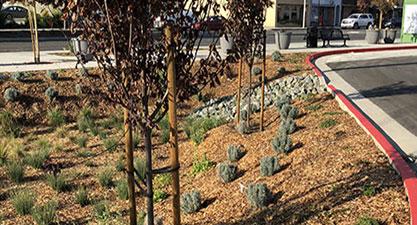
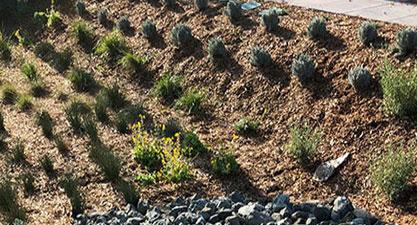
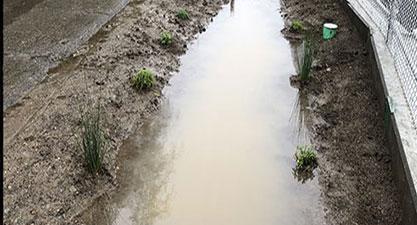

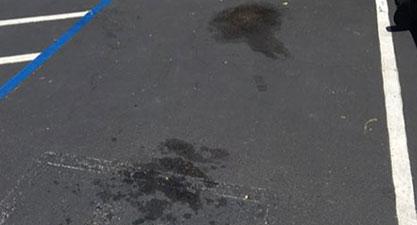
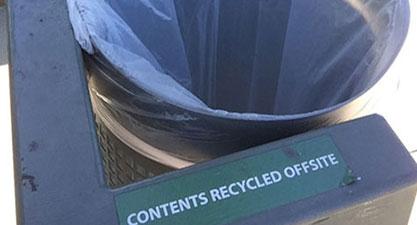
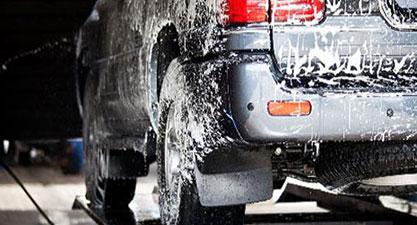
If you‘d like to report a storm water issue on the Caltrain system, please call Customer Service at 1.800.660.4287.
